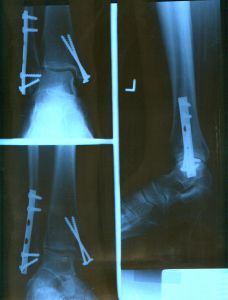 Sovereign Immunity derives from the medieval principle that “The King can do no wrong.” Prior to 1975, its application in Florida meant that the government could not be sued for damages caused by its wrongdoing. In that year, the Florida Legislature enacted Florida Statute 768.28, which allowed actions against the state or any of its agencies or subdivisions (e.g., cities, municipalities, counties). However, the statute capped the amount that could be recovered, regardless of the actual damages in a case, and it allowed to stand absolute immunity for planning level decisions.
Sovereign Immunity derives from the medieval principle that “The King can do no wrong.” Prior to 1975, its application in Florida meant that the government could not be sued for damages caused by its wrongdoing. In that year, the Florida Legislature enacted Florida Statute 768.28, which allowed actions against the state or any of its agencies or subdivisions (e.g., cities, municipalities, counties). However, the statute capped the amount that could be recovered, regardless of the actual damages in a case, and it allowed to stand absolute immunity for planning level decisions.
From the statute’s original enactment until July 1, 2011, a period of 36 years, the damage caps stood at $100,000 per individual, $200,000 total per claim. For example, if 4 people were catastrophically injured by the negligence of a government employee, the most any one individual could recover was $100,000, leaving the other 3 to share the remaining $100,000. (The $200,000 could also be split equally among the four or any other way, so long as any one victime did not receive more than $100,000.)
In 2009, the Florida Legislature passed a bill upping the damage caps to $200,000/$300,000 effective July 1, 2011. The increase, although far from adequate in many cases, was a long time coming and a positive step.
The statute has left untouched absolute sovereign immunity for the discretionary, judgmental, planning-level decisions of a governmental entity. Examples include decisions concerning the initial plan, road alignment, traffic control device installation, the improvement of roads and intersections, and defects in the construction of a road, median, and intersection.
However, once the sovereign becomes aware of a hazard so serious and so inconspicuous to a foreseeable plaintiff that it virtually constitutes a trap, the planning level absolute sovereign immunity is waived, bringing into play the damage caps discussed above.
Countless wars have been fought over whether planning level immunity applies or has been waived.
Continue reading
 Follow this link, Ros-Lehtinen rethinks, to read my letter to the editor published by the Miami Herald on September 29, 2011.
Follow this link, Ros-Lehtinen rethinks, to read my letter to the editor published by the Miami Herald on September 29, 2011. Florida Injury Attorney Blawg
Florida Injury Attorney Blawg








